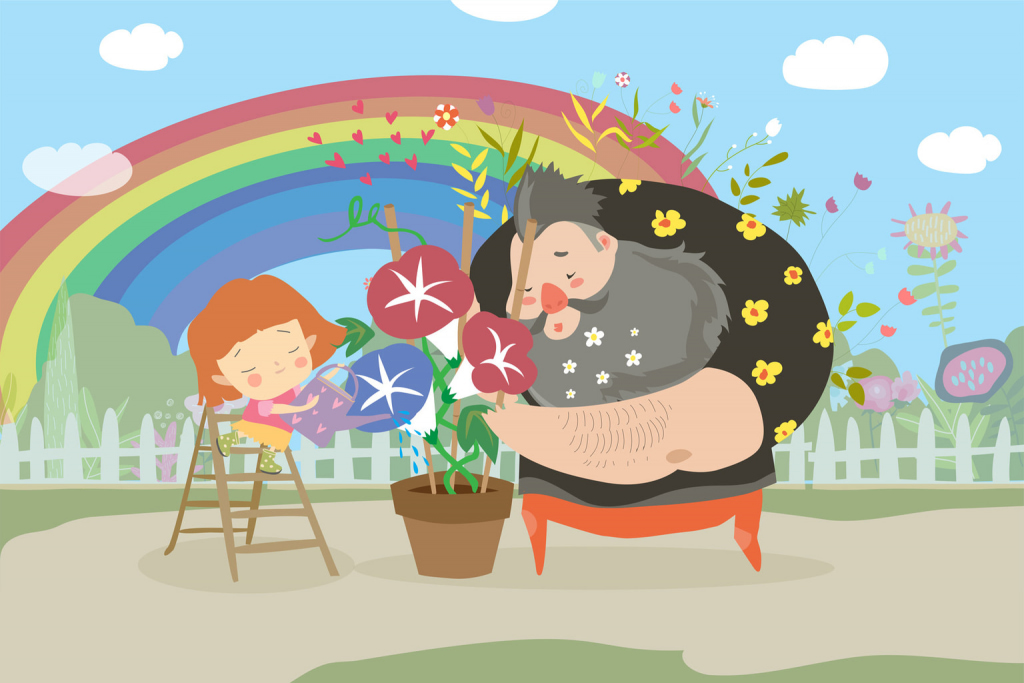I still remember the day we brought the youngest member of our family home. She was so tall and heavy; I could barely carry her. And she was crawling with bugs who happily migrated under my shirt and into what’s left of my hair after I gently sat her down in her new home, our balcony.
When the school had told us to pick up our daughter Hana’s plant over the summer vacation, I had expected a potted flower that would nicely fit on a windowsill without obstructing the view. Not something resembling a small tree, almost as tall as Hana herself. And Hana is tall. The other day, a well-meaning elderly waitress in a restaurant asked her if she is in the fifth or sixth grade. She is in the first.
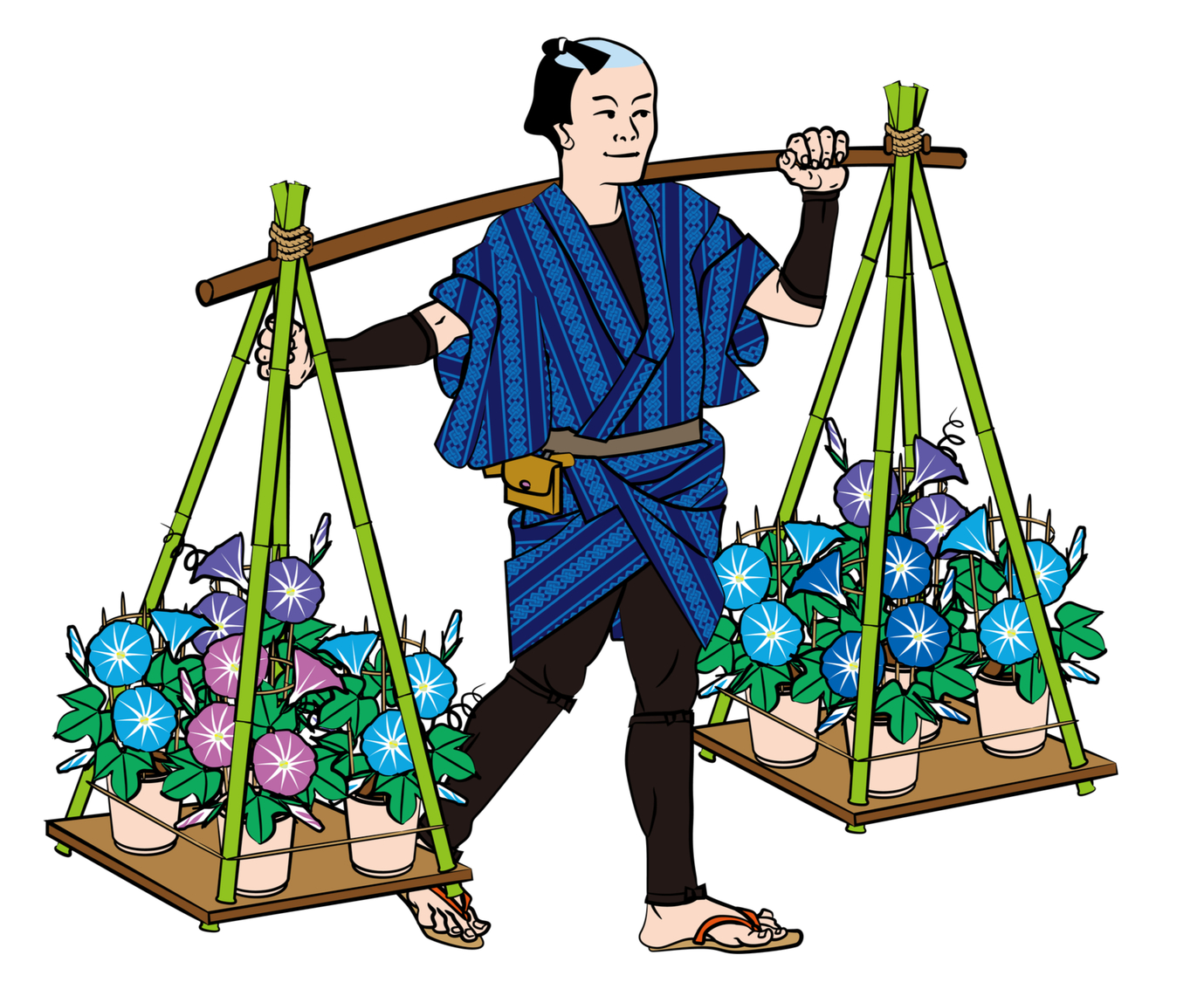
Home for the Homework
The plant in question is an asagao (morning face) in Japanese, morning glory in English. It blooms in the morning, hence the name, and closes for the rest of the day when the sun is getting too much for it. Hana planted and nurtured it herself in school and continuing care is one of her homework assignments. While the rest of the free world is rightfully discussing the abolishment of the unproven concept of homework, in Japan students even get assignments over the holidays.
So, her first summer vacation was spent watering, trimming and spraying her asagao while recording the process; daily reading aloud from her textbook; preparing a presentation on a topic of her own choosing; and keeping a diary of all the things she did with her free time. I was relieved she occasionally found something besides “I’ve been doing my damn homework!” to write in there.
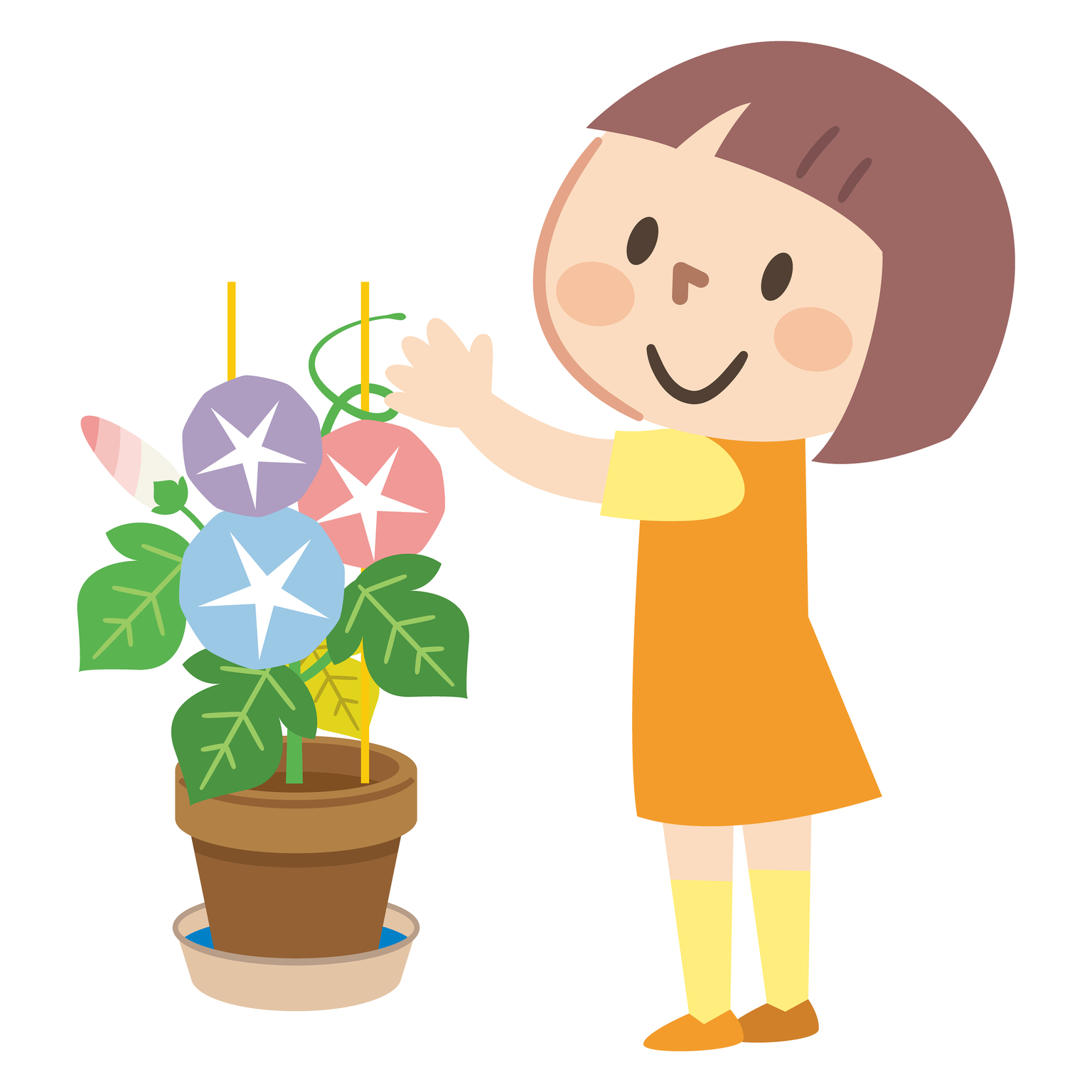
The reading tasks she made fun for herself and others by rapping the lines. She found her flow quite naturally, which surprised us. Neither my wife nor I have anything against hip hop, but it is hardly a fixture in our house. My wife is more of the R’n’B persuasion; I come from a rock background. (I do own a couple of Ice-T albums, yet for hopefully obvious reasons, I don’t play them when my 7-year-old is around).
For her presentation, she chose the colors of the rainbow and their international perception. While everybody around the world sees the same kind of rainbow, the color range is interpreted differently. The Baiga tribe, for instance, perceives only two colors when rain reflects sunlight. In Japan, it’s seven – two more than in my home country of Germany. No, I wouldn’t know any of this either if Hana didn’t talk about it without end.

While all of this is very interesting, it is the new life growing on our balcony that intrigues me most.
Starting to Care
I am by no means a habitual plant lover. Never cared much for them. I had a very brief cactus phase in my youth, probably because I found their spikiness delightfully contrarian, but mainly because they were the least demanding species of greenery on the market.
I had just proven again that I have no way with plants a few weeks earlier. It was another school project. Hana brought home a small flower which we parents were supposed to transfer to a bigger container. It didn’t sound too complicated, so I took it on. My wife suggested buying a medium-sized pot and some additional soil at the 100-yen store close to our house. Instead, I did the manly thing. I took the bus to the next Aeon Style, where I bought pretty much the entire gardening department. Gloves, shovels, fertilizers and several items I am yet to research what exactly they are for.

The flower didn’t survive and I didn’t feel like obtaining a new hobby anymore.
The Cult of Asagao
But with Asa-chan it’s different. I can’t wait to get up in the morning, check the number of flowers, note their colors (there are blue, pink, and violet variations) and harvest the seeds to ensure survival of the species. So, when Hana asks me to take over because she has an important playground appointment, I won’t bark: “I’m not doing your homework for you, young lady!” Instead, I’ll gush: “Of course! With pleasure! Thank you for your trust! I won’t fail you this time.”
When the typhoon season brought strong winds and heavy rain, I took Asa-chan inside, and it got us even closer together. In fact, she bloomed much longer on those indoor days, protected from that blazing sun out there, our mutual enemy.
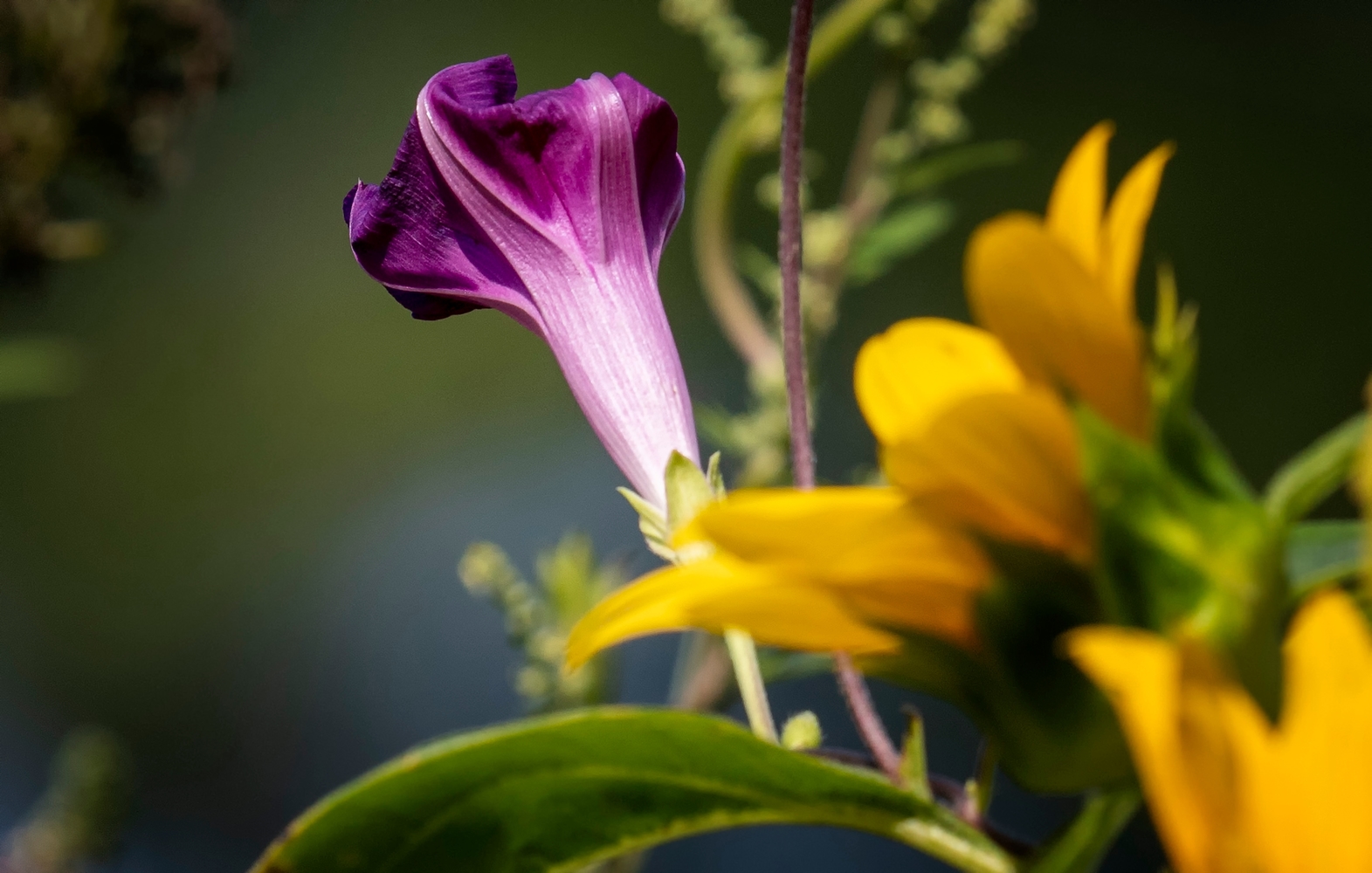
It’s no wonder Hana’s school chose this particular specimen as their subject. If you open your heart to the asagao, your eyes will see it everywhere. In front of every house, looming over every balcony, snapped by every smartphone and shared on every social media account. In our neighborhood, they often grow in the tale-tell blue-yellow pots with name tags that ours also came in. That makes it very easy to identify the homes of Hana’s classmates.
Sometimes we wander the streets, stop at an asagao and say: “Look how nicely Sato-kun’s is blooming! Wonder what that kid’s secret is?” Or: “If Suzuki-chan doesn’t spray her plant’s leaves anytime soon, they will be burnt by the end of the day! What kind of parents let this happen?” We can tell by the conditions of their potted plants which kids will be proper company for Hana.
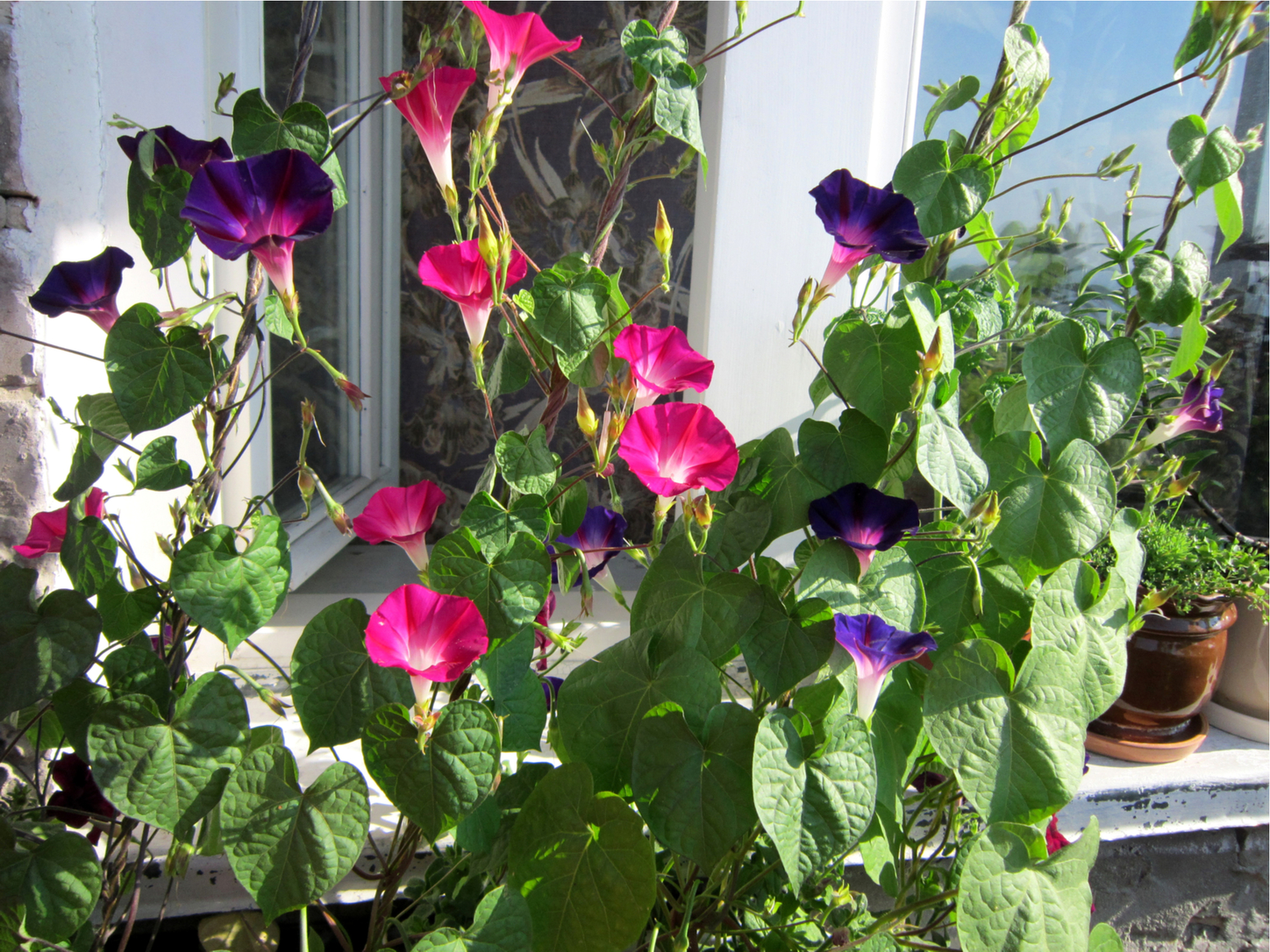
Plant’s not Dead
My heart sank when I opened the curtain one morning and Asa-chan showed no flowers. Had I killed her after all? I was so sure our care regiment had been immaculate. What more could I give? Human blood?
Before I could take that thought any further (we live on a quiet street without many witnesses), the plant made a slow but steady recovery. On the day we finally took it back to school after the summer vacation, it presented a record-breaking 13 flowers. I’m sure it was trying to say: “No! Don’t take me back! Let me stay with you forever! See how beautiful I am!”
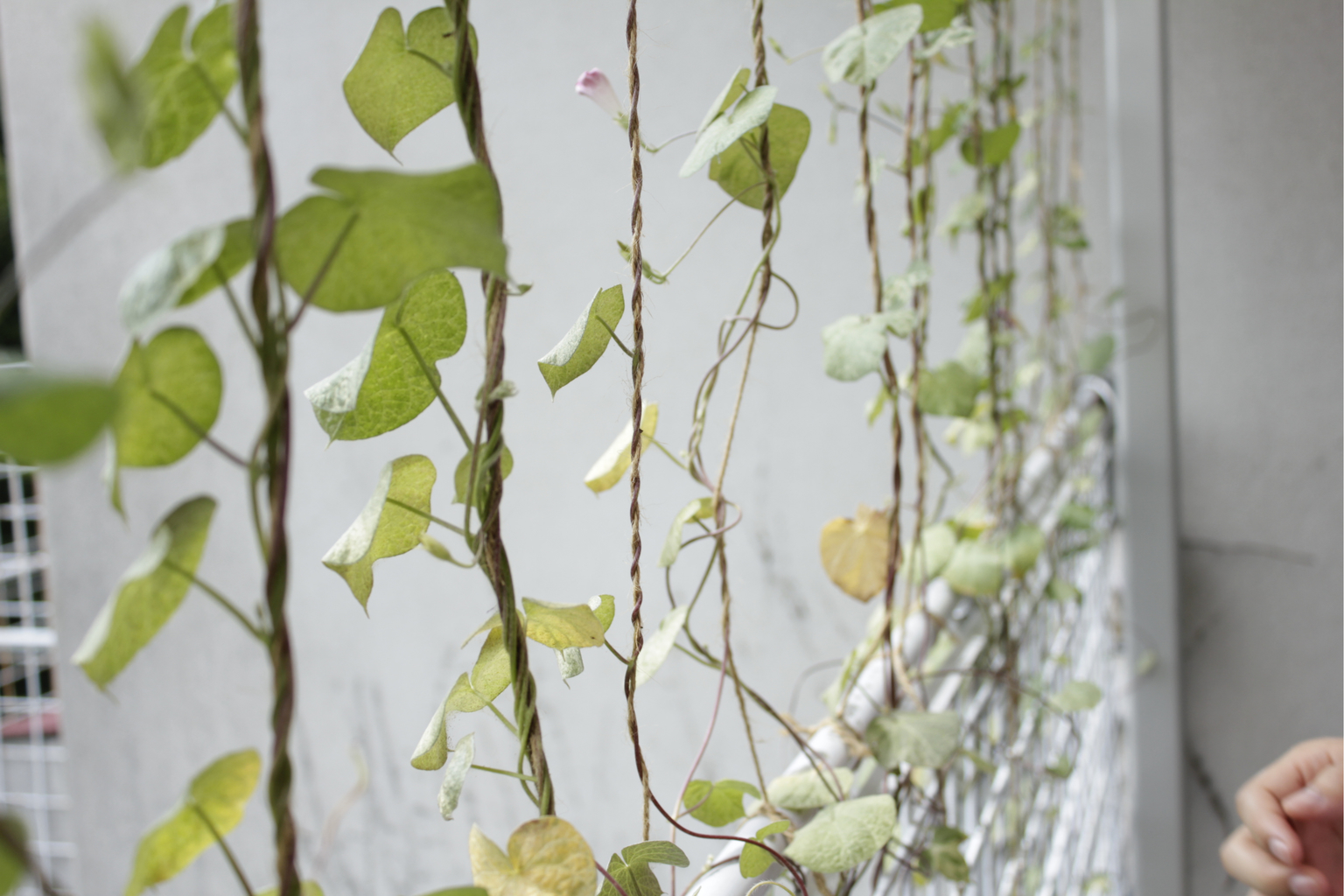
Sending Hana off to school every morning has become a happy routine for me since she likes it there and I know she’ll be back by late afternoon to discuss international rainbow perception. But the asagao? It was like sending her off to a far-away boarding school. When I see her next time, will she still be my same old Asa-chan?
Tokyo Daddy Issues: Learning to Let Go (to Elementary School)

